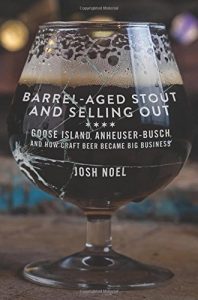 The summer has raced by. We only have a bit of lingering warmish things left. Then false summer comes, followed by the now doubly questionable Indian summer, then lastly a few surprisingly cool rather than cold days. Harvest is coming in. Season of mellow fruitfullness and all that entails. For the ladies to the right it included rather nice dresses. I saw this image on the Twitter feed of The Georgian Lords but have no idea where it is from. I suppose it indicates all hands on a day where there were deck as it’s hardly The Gleaners of months later on in the cycle. But, perhaps surprisingly, not unlike The Harvesters of 1565.
The summer has raced by. We only have a bit of lingering warmish things left. Then false summer comes, followed by the now doubly questionable Indian summer, then lastly a few surprisingly cool rather than cold days. Harvest is coming in. Season of mellow fruitfullness and all that entails. For the ladies to the right it included rather nice dresses. I saw this image on the Twitter feed of The Georgian Lords but have no idea where it is from. I suppose it indicates all hands on a day where there were deck as it’s hardly The Gleaners of months later on in the cycle. But, perhaps surprisingly, not unlike The Harvesters of 1565.
First up and as an excellent introduction for an effort which seeks to separate from chaff from the grain, Stan wrote about an article about wine writers and junkets and other seductions. Like the author, the excellent Jamie Goode, he uses the word “satire” but, as is usually the case with satire, it is framed as such to make a point about a truth:
Good reading from an author who writes, “Personally, I’d rather drink beer than suffer these dull, dishonest, trick-about wines.” Not sure what alternative he’d suggest for dull, dishonest, tricked-about beer.
Is it the beer that is dishonest? In some cases, yes but not always. Anyway, excellent thoughts as we seek out the good as well as… the Goode in what’s out there to read this week. A reasonable contrasty comparison is this article that Matt noticed by Alicia Kennedy which in part covered similar ground with less of a satirical veneer and more of a personal reflection:
When I was 31 and used my passport again, it was to go to Spain on a trip paid for by a winemaker. The next month, it was a two-week trip to Italy with family that completely drained my meager savings (until I moved to Puerto Rico, this was the longest I’d ever been out of New York), and the next, it was to Scotland for whisky tasting. From 2017 through my move in 2019, I traveled somewhere pretty much every month. These professional opportunities (some personal), about which the ethics were and are always dubious, suddenly began appearing in my inbox at just the right time: after my brother passed away at the end of 2016 and I needed not to wallow, not to continue having panic attacks.
Staying at home, Martyn triggered a lot of arge and the barge when he himself wrote triggered about changes to the small brewery taxation laws of England and Wales.* It’s all the same to me in that I think reasonably healthy taxation of beer and other strong drinks is a perfectly normal thing to do but decide for yourself:
Much of the outrage seems to come from exaggerated claims of how many and how much brewers will be adversely affected by the proposed reforms, and allegations that the changes will mean large brewers gaining at the expense of small brewers, though the group that led the call for a change in SBR, the Small Brewers Duty Reform Coalition, includes a fair number of brewers making less than 5,000 hectolitres a year among its 60-plus members.
Plus, and I presume some brewers read this so I appreciate it’s not what everyone wants to hear, the idea that the outrage is “manufactured” is not necessarily an accusation. It’s a reality that the discourse is bent and pushed and pulled for any number of reasons and interests. This is one of them.
According to the NME, 99 metal bands have signed up for a ’99 Bottles Of Beer’ charity cover:
The idea for the cover was put together by The Boozehoundz, the moniker of Scour members Derek Engemann and John Jarvis alongside Robin Mazen of Gruesome. It sees 99 musicians all singing a single line of the song, amounting to a mammoth 23-minute song.
All of which is entirely excellent.
Speaking of music, the earlier Matt in my life on these information superhighways linked to an excellent remembrance of being a teen at raves in Preston 30 years ago:
There was an abundance of places to go out to in Preston in the early 90s. The country was in recession but everyone was partying hard. Friday was rave night at Lord Byrons and Saturday was indie/dance. After a grim experience at a club in town when I was 16, Saturday nights at Byrons became part of my life. Most Saturday nights from the beginning to the end of 1991 we were there, drinking cider and black, dancing to our favourite music and forging friendships that would continue for three decades and more.
Reads as true as a witness statement in a criminal proceeding.
Andreas K. wrote about Carinthian Steinbier this week, an Austrian beer that disappeared over 100 years ago, and in doing so gave us a great intro into the world of hot rocks in cauldrons:
Carinthian Steinbier is interesting because it survived for a fairly long time, until 1917 to be exact, despite repeated attempts to completely supplant it with what was called “kettle brewing”, i.e. brewing involving metal kettles. During other research, I recently stumbled upon a 1962 article that is probably the most detailed description of Carinthian Steinbier tradition that I’ve found so far.
“Things You Gotta Try” on NPR’s Splendid Table included dipping Oreos in red wine. Oatmeal Walnut cookies in Imperial Stout anyone?
I have to admit, I have no interest in hard seltzer or hard soda or hard kombuchca and even little interest in most beer writing about cider but I do appreciate Beth’s argument that at least for the business of brewing, non-beer may be one of the ways forward:
They’re not the only San Diego brewery to fully embrace the seltzer craze. Mikkeller’s own line of hard seltzers—dubbed “Sally’s Seltzer” as a nod to one half of their iconic character duo Henry and Sally—launched in January 2020 in response to craft consumers’ changing demographic. “It’s a perfect change of pace for any type of drinker—and a cool opportunity for us to connect with a wide demographic,” explains founder/CEO Mikkel Borg Bjergsø. “It also fits with our desire to be inclusive and reach as many people as possible.”
Let’s be honest. They are end-times beverages, just the same coolers which have been with us for almost thirty years and just gak by another name. As relevant to an interest in good beer as the brand of bubble gum stuck under a pub’s table top. Mr. B. noted the latest abomination: “India pale hard seltzer.” FFS.
Finally, it was with great sadness that I heard the news about the death of Jack Curtin, dean of Philadelphia’s beer writing scene. He was a great supporter of this beer blog from day one and someone with whom I shared an interesting email relationship even if we never met. One of his greatest skills was ripping into his pal Lew Bryson, who I know will mark the loss deeply.
Enjoy the rest of your summer days. As you do, check in with Boak and Bailey most Saturdays, plus more at the OCBG Podcast on Tuesdays (where Jordan shits on church ladies and is dead wrong about coconut macaroons) and sometimes on a Friday posts at The Fizz as well. And sign up for Katie’s weekly newsletter, too. Plus the venerable Full Pint podcast. And Fermentation Radio with Emma Inch. There’s the AfroBeerChick podcast as well! And have a look at Brewsround‘s take on the beer writing of the week. Not to mention Cabin Fever. And Ben has finally gone all 2009 and joined in with his own podcast, Beer and Badword. And BeerEdge, too.
*Never sure when these things apply to the whole or the part.








